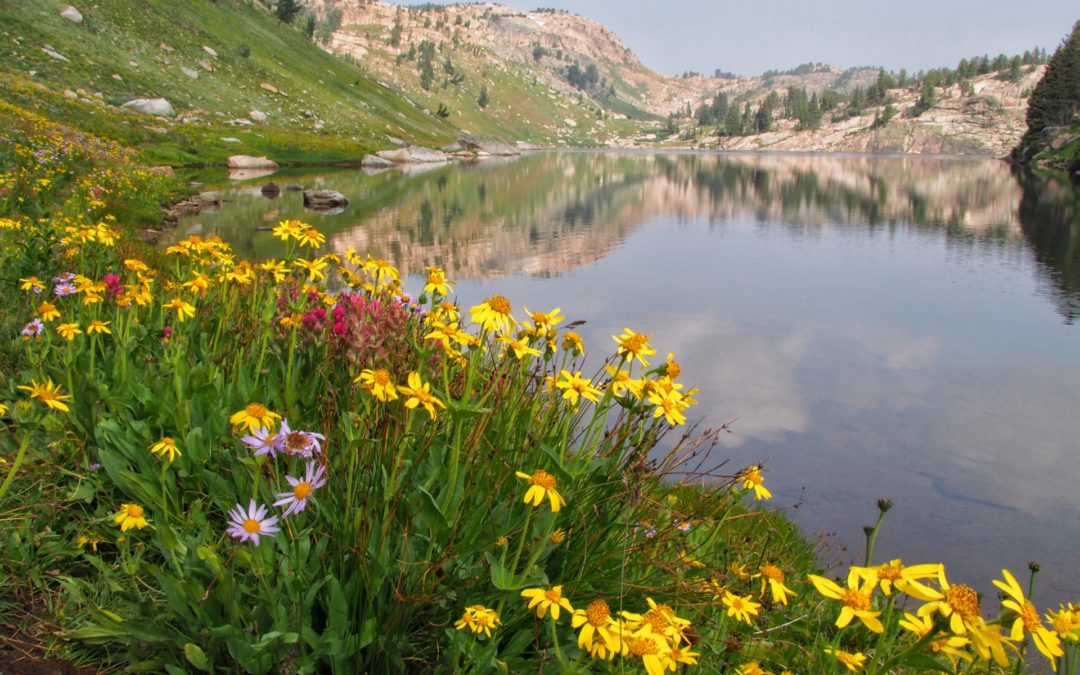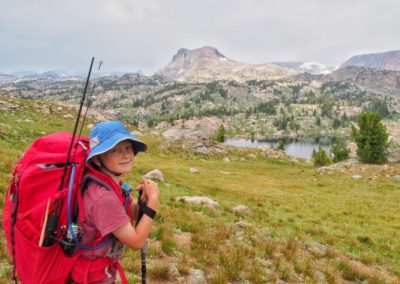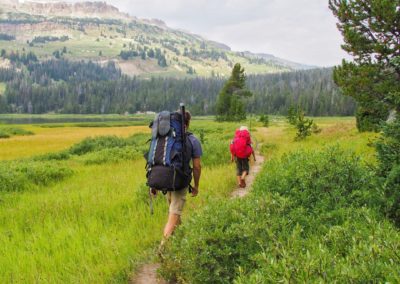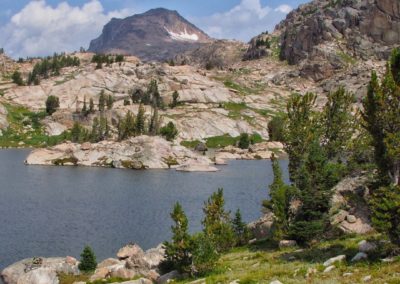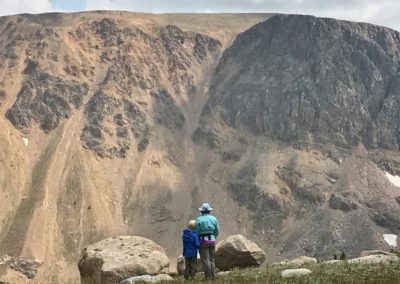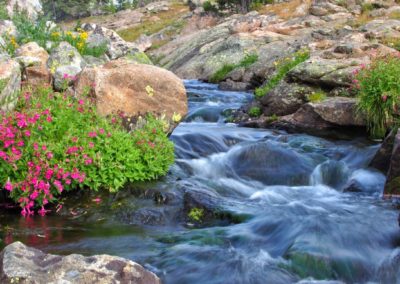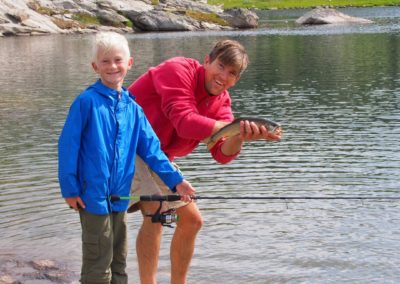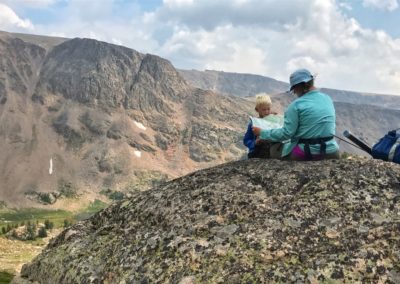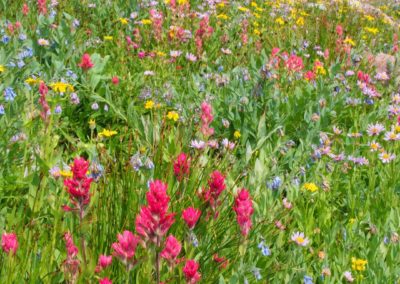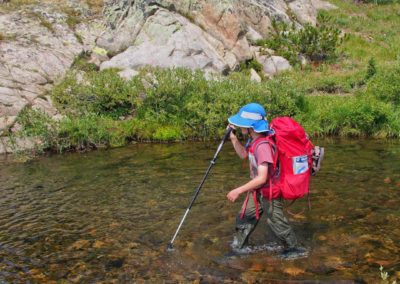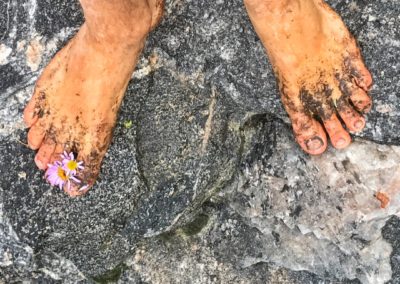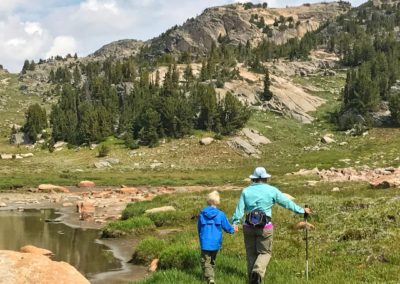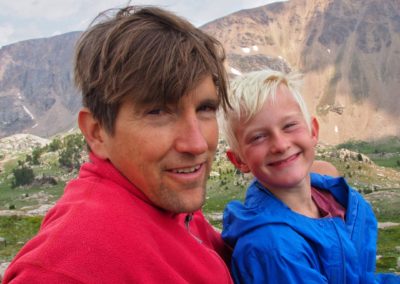The immense amount of snow per year* and glacially carved terrain means lots (and lots) of high country lakes to explore. It’s also a great place to fall in love with fishing. “The first thing on my agenda,” says little George on the hike in “is to…uh….set up the tent. AND THEN GET FISHING!” I’m sure he added the tent part for my benefit….but needless to say he was pretty excited to fish.
Over 300 lakes in the Beartooths contain a combination of self sustaining and stocked trout, including Yellowstone cutthroat trout, brook trout, rainbow trout, golden trout, arctic grayling, and variations of cutthroat/rainbow/golden trout hybrids. Even the most novice angler can catch multiple fish in these waters! Make sure to get the right fishing permits and regulations; the southern part of the Beartooths cross both Montana and Wyoming. You can stop over in Cody, Wyoming, Red Lodge, Montana, or Cooke City, Montana for local information and permits.
Before mid July, snowmelt saturates every nook and cranny and snow fields still cover many areas. And the mosquitoes are voracious! We like to visit the Beartooths between early August and mid September, when the ground is drier and bugs are fewer.
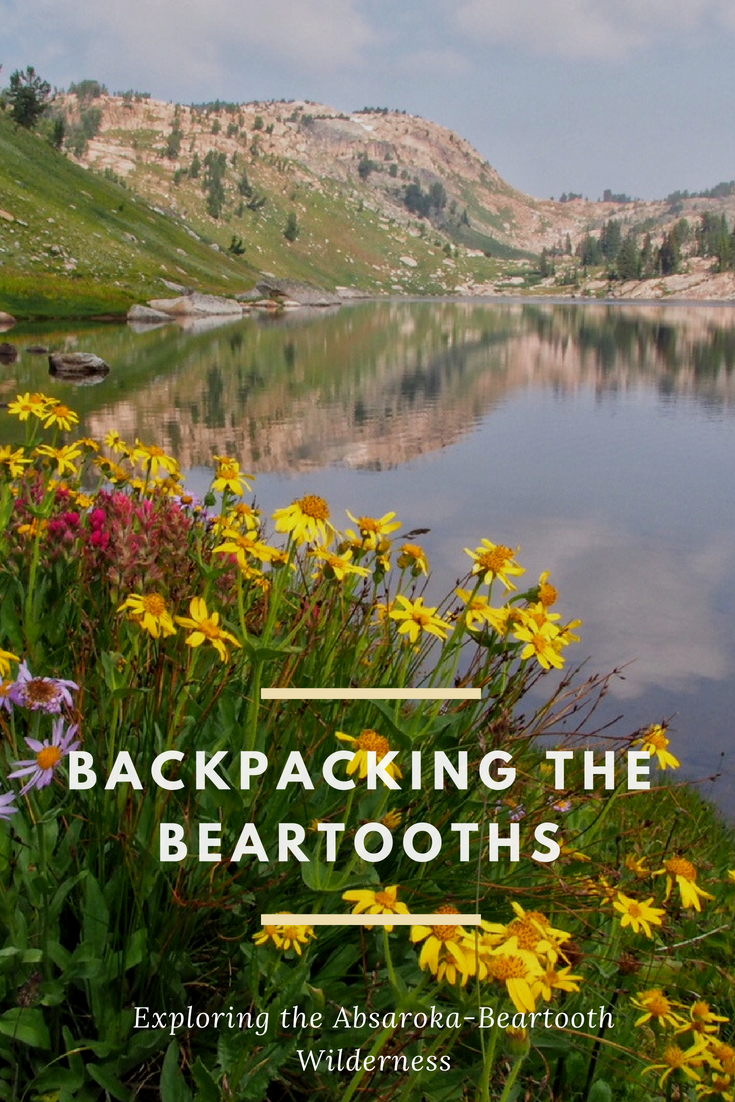
While there are many trailheads that access the Absaroka-Beartooth wilderness, the ones up at higher elevation near Clay Butte provide excellent access to the splendors of the plateau with less elevation gain. Hiking and exploring to find the perfect campsite is part of the fun – you’ll have many to choose from. Just make sure you set up camp at least 200 feet lakes and streams, and in a place you can securely store your food from bears. Before you go, you might check in with the local ranger stations to check on fire and any other restrictions in the area. We use this map to plan our trips, because we like the broad overview of the area. If you are doing extensive off-trail traveling, you might want a finer scale.
To get more of a glimpse of what it’s like in the Beartooths, see Time Flies: Fly Fishing Through Generations and this video.
Photos: Jenny Golding & George Bumann

